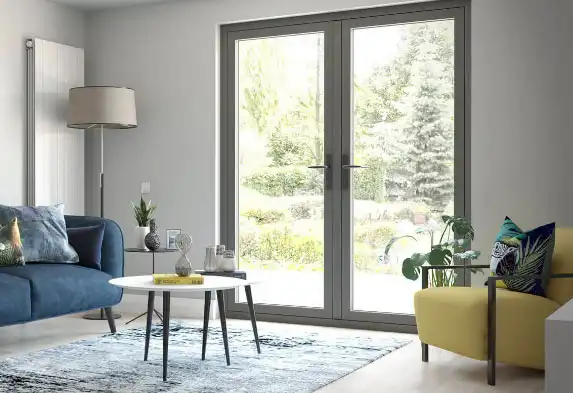We take great pride in the care we have given to our customers for more than 30-years
We’re on hand from the moment you contact us and will answer any queries you may have regarding your installation. Once the work is complete our team of experienced engineers will ensure that your installation remains in exceptional condition at all times. It’s no wonder that even after more than 30-years, personal recommendations are still our biggest source of new business.
We take great pride in the care we have given to our customers for more than 30-years
We’re on hand from the moment you contact us and will answer any queries you may have regarding the process. It’s no wonder that even after more than 30-years, personal recommendations are still our biggest source of new business.
What Happens Next
We begin by visiting you in your home to discuss your requirements, talk you through design ideas and then take some initial measurements. Once you’re happy to proceed we begin the next process.
Survey
The measurements taken up to now have been for estimation purposes only. Within the next few days our survey department will call and arrange for an experienced surveyor to detail the specification and take final measurements ready for manufacture.
Confirmation
A typical installation will start within 4-6 weeks from the survey. Where planning permission is required for a conservatory, a survey will only be undertaken once permission has been granted. We will call to confirm a fitting date. In order to minimise any inconvenience we will also let you know approximately how long the work will take.
Installation
Our experienced and qualified installers will respect your home at all times by using dustsheets and ensuring that everything is cleaned up once work is complete.
Payment
We want you to be happy with every aspect of your installation. When your installation is complete the fitter will provide you with a completion and satisfaction note. When you have looked over your installation with the fitter simply sign the form and complete your final payment. You can now call our office and make secure payments by card over the phone.
What Happens Next
We will get back in touch with you after you have submitted an enquiry or gotten in touch with us. We will contact you either by email or give you a call.
Send Us Requirements
After we have gotten in touch, you will need to send over specific requirements and measurements for you next customer’s job. Once we have a measurements needed, we can go to the complete the next step.
Quotation
For this step, we will send out the quotation based on the requirements and measurements sent through on the previous step.
Sign Off
You now would have received our quotation and if all is okay, we can get the quote signed off.
Delivery or Collection
Now it’s time to get your products. Depending on what was discussed, we can offer delivery or collection of your products.
How to prevent condensation
Ventilation is key to reducing the build-up of condensation in your conservatory and throughout your home. While it seems contradictory, opening a window slightly and having the heating on in the room will ensure that air flows properly around the room.
Have windows opened when bathing and washing up is highly recommended as this can significantly reduce the amount of water in your home. Use ventilation such as cooker hoods where possible, vent tumble dryers outside, and keep your home warm to prevent condensation forming on walls.
Window coverings can make the problem worse by trapping the moisture against the window. Make sure blinds and curtains allow for airflow.
You can have trickle vents installed in your windows as they can help to let air flow in and out of the room. Keep doors around your house open to let the air flow around your house.
For very moist areas, consider investing in a dehumidifier. These devices draw the moisture out of the air, stopping it forming on the windows. They can be expensive to buy, but you can also hire them over the winter months and just have the windows open wide in the summer.
Condensation Damage
Condensation on windows and in conservatories and the subsequent damage it can cause to paintwork, curtains and wall coverings are problems frequently encountered in many different types of buildings.
When the air cools outside you are at more risk of getting condensation on your windows and in your conservatory. With little ventilation due to the door and windows often being shut, moisture can build up in the air as water vapour, condensing to water as it hits the cold glass surfaces in your home and in your conservatory. While it can look like the windows or the conservatory are causing the condensation, it is actually just making it more visible.
Your windows and conservatory are built to be air and water tight, which is great when faced with rain outside; however, it can cause ventilation issues which are the main cause of condensation. When left, condensation can cause problems in your home, creating mould which can damage fabrics and have a detrimental effect on you and your family’s health.
Unfortunately, in our efforts to be more environmentally friendly, houses have been built to be more airtight to stop heat escaping. This has come at the expense of the ventilation in homes and can lead to problems with condensation. While it’s nice to not have to deal with draughty windows and doors, these draughts could actually help combat condensation in your home.
We produce water vapour constantly in our day to day activities. Just breathing produces half a pint of water an hour, and then when you factor in cooking, cleaning, and worst of all, drying clothes, the water that we produce every day saturates the air until it reaches dew point, where the vapour has to turn back to moisture. It does this on the coolest surface, which in winter is invariably the windows.
Planning Permission/Building Regulations
Where work is proposed to a listed building, listed building consent may be required. Also please check with your Local Council to see if ‘Permitted Development Rights’ have been withdrawn.
Building Regulations
Building regulations will generally apply if you want to build an extension to your home.
However, conservatories are normally exempt from building regulations when:
- They are built at ground level and are less than 30 square metres in floor area.
- The conservatory is separated from the house by external quality walls, doors or windows.
- There should be an independent heating system with separate temperature and on/off controls.
- Glazing and any fixed electrical installations comply with the applicable building regulations requirements (see below).
You are advised not to construct conservatories where they will restrict ladder access to windows serving rooms in roof or loft conversions, particularly if any of the windows are intended to help escape or rescue if there is a fire.
Any new structural opening between the conservatory and the existing house will require building regulations approval, even if the conservatory itself is an exempt structure.
Guarantees
Full 10 year insurance backed guarantee
Our commitment to customer care doesn’t end once our work is complete
We offer a full 10-year insurance backed transferable guarantee on all our windows, doors, and conservatories so you can have complete piece of mind when dealing with us.
In addition all of our uPVC frames are covered should there be any issues whatsoever with their joints or any deterioration of materials.
All glass units are covered when it comes to the performance of their hermetic seals ( misting units.)
We also cover all handles and hinges.
Kingfisher have built a reputation for Quality windows and doors and Exemplary Aftercare Service with the traditional values of a Family owned business.
Members of:
- FENSA
Long established Family Business trading from the same premises since 1989.
How to prevent condensation
Ventilation is key to reducing the build-up of condensation in your conservatory and throughout your home. While it seems contradictory, opening a window slightly and having the heating on in the room will ensure that air flows properly around the room.
Have windows opened when bathing and washing up is highly recommended as this can significantly reduce the amount of water in your home. Use ventilation such as cooker hoods where possible, vent tumble dryers outside, and keep your home warm to prevent condensation forming on walls.
Window coverings can make the problem worse by trapping the moisture against the window. Make sure blinds and curtains allow for airflow.
You can have trickle vents installed in your windows as they can help to let air flow in and out of the room. Keep doors around your house open to let the air flow around your house.
For very moist areas, consider investing in a dehumidifier. These devices draw the moisture out of the air, stopping it forming on the windows. They can be expensive to buy, but you can also hire them over the winter months and just have the windows open wide in the summer.
Condensation Damage
Condensation on windows and in conservatories and the subsequent damage it can cause to paintwork, curtains and wall coverings are problems frequently encountered in many different types of buildings
When the air cools outside you are at more risk of getting condensation on your windows and in your conservatory. With little ventilation due to the door and windows often being shut, moisture can build up in the air as water vapour, condensing to water as it hits the cold glass surfaces in your home and in your conservatory. While it can look like the windows or the conservatory are causing the condensation, it is actually just making it more visible.
Your windows and conservatory are built to be air and water tight, which is great when faced with rain outside; however, it can cause ventilation issues which are the main cause of condensation. When left, condensation can cause problems in your home, creating mould which can damage fabrics and have a detrimental effect on you and your family’s health.
Unfortunately, in our efforts to be more environmentally friendly, houses have been built to be more airtight to stop heat escaping. This has come at the expense of the ventilation in homes and can lead to problems with condensation. While it’s nice to not have to deal with draughty windows and doors, these draughts could actually help combat condensation in your home.
We produce water vapour constantly in our day to day activities. Just breathing produces half a pint of water an hour, and then when you factor in cooking, cleaning, and worst of all, drying clothes, the water that we produce every day saturates the air until it reaches dew point, where the vapour has to turn back to moisture. It does this on the coolest surface, which in winter is invariably the windows.
Specialist Glass & Glazing
Our windows, doors and glazed home improvements feature high performance glazing technology.
Acoustically insulating glazing can help keep noise outside so you can enjoy your living space in peace and quiet.
How does it work
Noise levels are measured in decibels (dB). A comfortable sound level is around 35dB in daytime and 30dB at night.
Acoustically insulating glass cuts out excess sound and the harmful effects of noise
The acoustic glass within a double-glazed unit comprises a special interlayer which acts as a dampening core to prevent sound frequencies from vibrating from one pane of glass to the other. This absorbs and weakens sound energy, helping to act as a barrier to noise.
This plastic interlayer also has the additional safety and security properties of laminated glass (see “safety and security glass” section).
We find that different thicknesses of glass work the best. 4mm glass with 6.4 laminate works well but for the best sound insulation we use 10mm glass with 6.4 laminated.
Benefits
-
- Acoustic glazing forms an effective barrier to external noise allowing you to sleep restfully in a tranquil environment.
- You can enjoy your home at a sensible noise level so you can relax and unwind without additional stress.
- Your family can study and concentrate without the distraction of excessive noise.
- Reduce impact noise, particularly on conservatory roofs when it is raining.


Get In Touch
For any questions please get in contact with our helpful team today. We will are happy to help and answer any queries you may have no matter the size. You can get in touch today buy using our online contact form or by calling us on 0800 585945. We look forward to hearing from you!










